Service History
The three masted schooner
Oak Leaf was constructed in 1866 by Peck and Kirby in Cleveland, Ohio. The centerboard schooner was built for Captain Henry Kelly, whose fleet routinely traded between Lakes Erie and Michigan. The vessel's original dimensions of 130 feet in length by 32 feet in beam were small to average for the time period. The ship was intended to carry bulk cargo such as grain, corn, lumber, ore, coal, riprap, gravel, and crushed stone; these were all commodities in which sailing could still compete with rail transportation and the evermore efficient steamship.
The schooner's original crew of six to eight men was commanded by Captain Hugh Morrison, a one-armed man whose handicap demonstrated the dangers of a seafaring life. Manual labor, essential to the operation of these vessels, was innately dangerous. Maiming from loading, unloading, and sailing accidents was not uncommon, and few lifetime sailors completely escaped the working man's curse of the nineteenth century. The
Oak Leaf apparently had a routine early life. Like most vessels in the nineteenth century, it changed owners many times. Routine repairs and maintenance occupied many off-seasons, and an entirely new deck was installed in 1874.
The schooner was rebuilt in 1886. It was converted to a barge only five years later, losing the masts and receiving 30 more feet in length. This conversion reflected the economic times, as smaller sailing hulls on the Great Lakes found it increasingly difficult to compete in bulk commodities, which were now transported in great quantities by immense steel-hulled, steam-powered, purpose-built bulk carriers whose cargo capacities eclipsed those of any wooden carrier. Economy dictated that older wooden sailing vessels be converted to barges. Barges' small crews reduced overhead costs, and their cargo capacities enhanced those of their small wooden steamer escorts, which were themselves fast becoming obsolete.
During the winter of 1906, Door County's largest newspaper, the
Door County Advocate, reported that negotiations were underway for the
Oak Leaf's purchase by the Sturgeon Bay Stone Company. From the opening of navigation in spring 1906, the
Door County Advocate regularly reported the movements and activities of the barge and its escort, the steam barge
I.N. Foster. At times, the
Oak Leaf was paired with the barge
Ida Corning on its transport route, but the tow seldom if ever consisted of more than two barges in line. Tugs and barges from other quarries often escorted the
Oak Leaf, demonstrating that the various quarries cooperated when their loads of stone had to be delivered to the same destination. During the early years of operation, the Sturgeon Bay Stone Company periodically contracted tugs from local quarries to do its towing.
Barges and their escorts appear to have spent an inordinate amount of time dodging storms and inclement weather, a reflection of their poor seafaring qualities. On one occasion the
I.N. Foster and
Oak Leaf survived a three-week odyssey, dodging storms, seeking harbors and island lees, and crisscrossing the same bodies of water more than once, all in an attempt to get a simple cargo to Petoskey, Michigan, which was only a day's sail away in good weather. On another occasion the
Oak Leaf rolled so badly on a return trip from Ludington, Michigan, that it unshipped the mast, and the deck-boiler went over the rail. Indeed, most barges lost on the lakes were victims of shifting cargo that resulted in capsizing.
Occasionally, however, fatalities occurred even when a barge was not in distress. The body of 30-year-old Francis C. Brown, deckhand on the
Oak Leaf, was recovered in Sturgeon Bay on August 27, 1908, after apparently falling overboard during the barge's outbound journey to the Michigan shore. With only two or three men on board, it was unlikely that anybody would witness a sailor falling overboard.
Final Voyage
By 1928, the
Ida Corning,
Oak Leaf, and
Empire State were abandoned at the Sturgeon Bay Stone Company's Bullhead Point wharf. The 1929 stock market crash and subsequent depression ensured that the vessels would never again carry a load of stone. Their collective value was placed at $7,000 before final abandonment.
It is unclear exactly when the
Ida Corning and
Oak Leaf were taken out of service, though the
Oak Leaf's near-shore position suggests it was laid up first. The
Door County Advocate, a local newspaper that kept close tabs on the vessels during their working lives, last referred to the
Ida Corning and
Oak Leaf as functioning stone barges in 1920. The
Empire State, located at the head of the point, was reportedly used to extend the company's dock into deeper water in 1916. For many years, the three hulks were popular recreational venues for many Sturgeon Bay residents. However, the Sturgeon Bay Stone Company burned all three vessels to the waterline in 1931 to prevent potential litigation by an injured swimmer or fisherman.
Today
The Bullhead Point site consists of four features: the shipwrecks
Empire State, Ida Corning, and
Oak Leaf, and the point itself. Located on the west side of Surgeon Bay, Bullhead Point proper is a large rock outcropping piled on an older rock crib pier structure, approximately 380 feet in length by 200 feet at its greatest width.
The remains of the
Oak Leaf represent a centerboard vessel measuring approximately 162 feet in length and least 29 feet in beam. Like the purpose-built schooner barge
Ida Corning, the converted
Oak Leaf's mast steps and chain plates indicate a similar Grand Haven-style configuration. There is no other archaeological evidence for rigging of any sort, a further indication that the vessel last served as a stone barge.
Although the top of the centerboard is canted a few inches from exact center, it does go through the keel, indicating it was built after the insurance underwriter regulation changes of 1856. No supports hold the centerboard trunk to the port and starboard sides of the ship; consequently, the vessel likely had less than a 13-foot depth of hold. The centerboard trunk is 24 feet long, relatively short for the overall length of the hull. This corroborates historical documentation indicating that the
Oak Leaf's original length of 130 feet was substantially increased in 1891. Typical of Great Lakes schooner construction in the late nineteenth century, the
Oak Leaf's framing comprises double frame sets placed on 24-inch centers, with forward frame sets slightly larger than their aft partners. Individual frame pieces, or futtocks, are butt scarfed and fastened with iron pins. The keelson is supported down most of its length with a single rider sided at 9.0 inches and molded at 8.5 inches. There are no sister keelsons. An interesting method of longitudinal strengthening is, however, readily apparent.
Iron bracing runs along the keelson, counteracting the weight of the heavy cargo that often compromised the vessel's longitudinal strength. On the keelson's starboard side, an iron brace measuring 16.0 by 0.75 inches runs from just forward of the foremast to a few feet aft of the mizzenmast. The bracing is reinforced in two places with five 10-foot overlapping pieces the same width as the main brace. Each of these overlapping reinforcements is secured to the longer, primary reinforcing brace with 1.5-inch rivets. It appears that the primary brace possesses a slight, gradual arch, adding further to its strengthening capacity. This was probably added during the vessel's conversion to a stone barge, although it may be part of the original construction.
The
Oak Leaf has virtually no deadrise or roundness to its hull and a very sharp turn of the bilge. It would have been virtually rectangular in full cross section. The hull was constructed to sacrifice sailing qualities for cargo capacity and a shallow draft, qualities that are generic to Great Lakes ships of the latter half of the nineteenth century.
Weather, ice, and the dynamic shallow environment are the chief culprits in the deterioration of the Bullhead Point shipwrecks. During times of exceptionally low water levels, more of the wrecks' structure is exposed to the elements and is more likely to be damaged by ice formation and movement. By creating a permanent record of what the vessels look like today, the archaeological documentation produced during fieldwork in 1999 is the best way to preserve the history that these vessels represent. This fieldwork and historic research, carried out by the Wisconsin Historical Society and East Carolina University's Program in Maritime Studies, was also used to nominate the site to the National Register of Historic Places.
Equally important, WHS underwater archaeologists are using this documentation to create interpretive signage and public presentations. Part of the WHS Wisconsin's Maritime Trails program, these initiatives are aimed at fostering public awareness of Wisconsin's unique maritime history and encouraging preservation of the state's impressive collection of historic shipwrecks. Clearly visible from shore, the Bullhead Point site is an excellent locale for public interpretation of the area's historic stone industry and associated vessels. The site is equally interesting, informative, and accessible to divers, snorkelers, boaters, and pedestrians.
In a metaphorical sense, the Bullhead Point historic district can be used as a time machine to help reconstruct a small part of the late nineteenth-century community of Sturgeon Bay. It conjures a time when the bay echoed to staccato blasts of dynamite and black powder, the constant ring of stone drills, and the intermittent rumbling of hundreds of tons of cargo cascading into the gigantic hollow shells of waiting stone barges.
To visit the Bullhead Point City Park in Sturgeon Bay, go north on N. Duluth Ave. Go past County Road C. Bullhead Point is on the right, across from the old stone quarry.
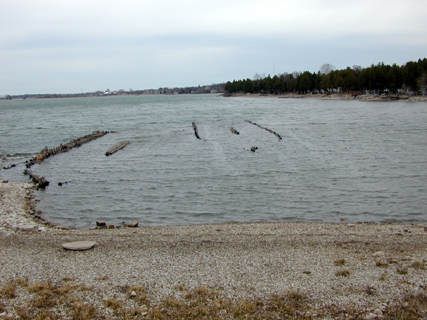
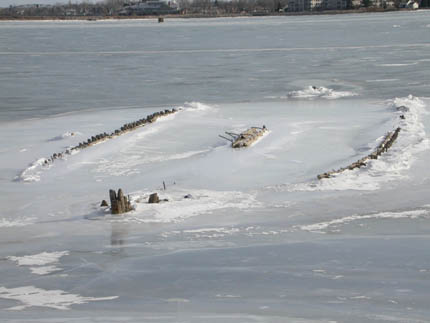
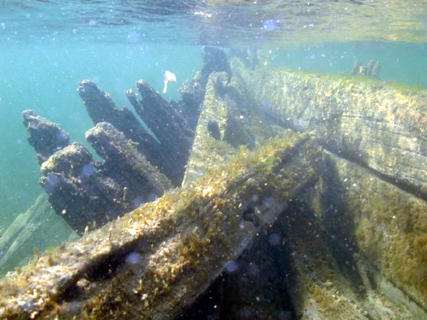
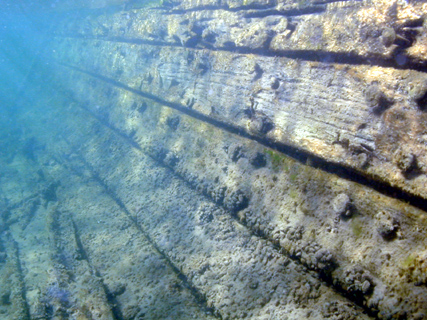
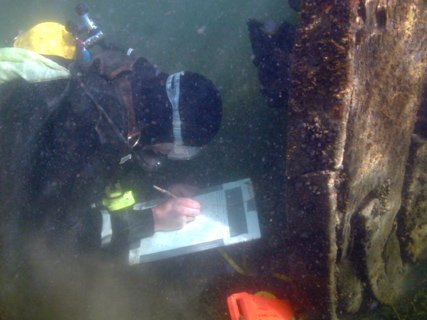
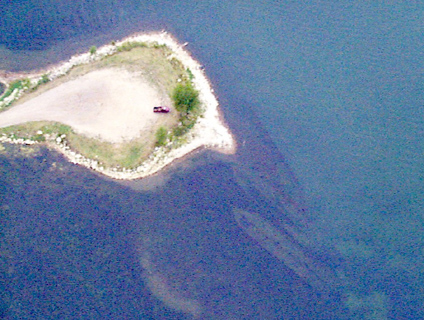
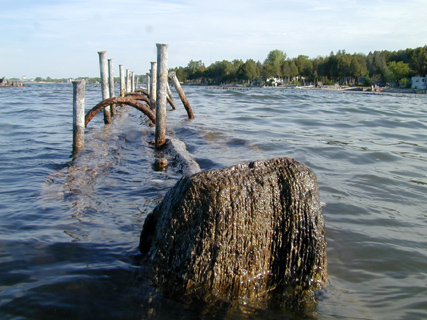
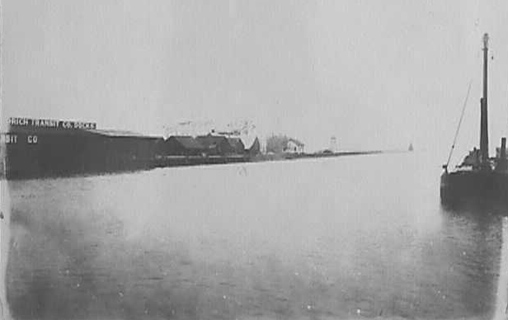
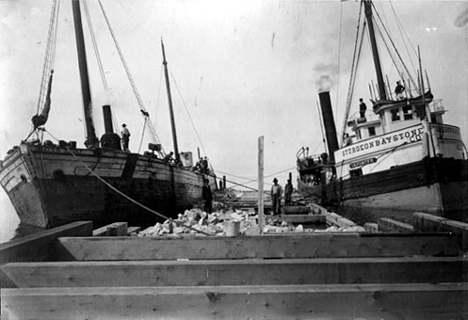
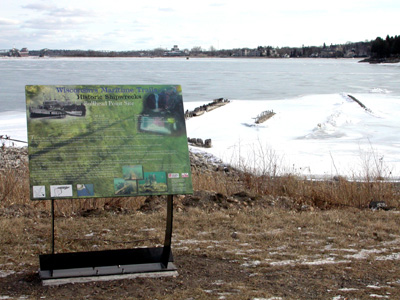
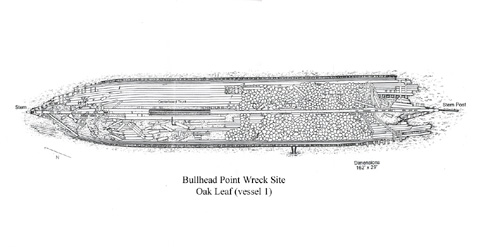
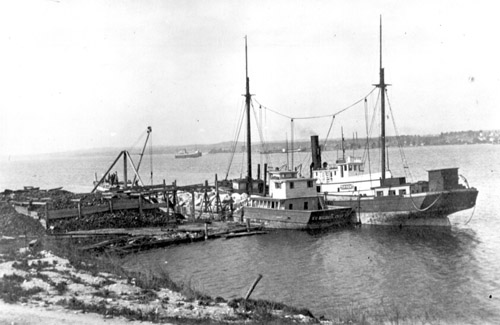
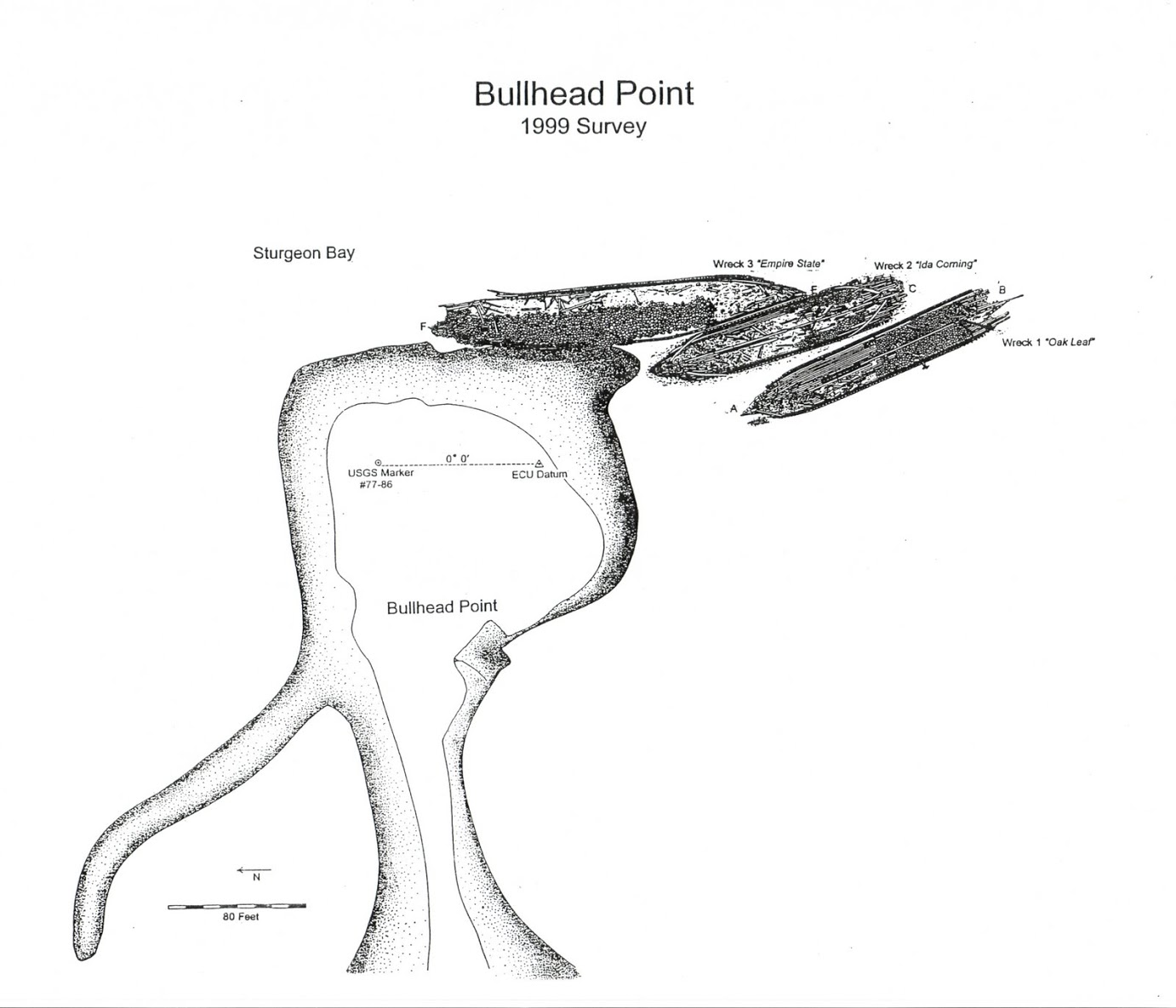
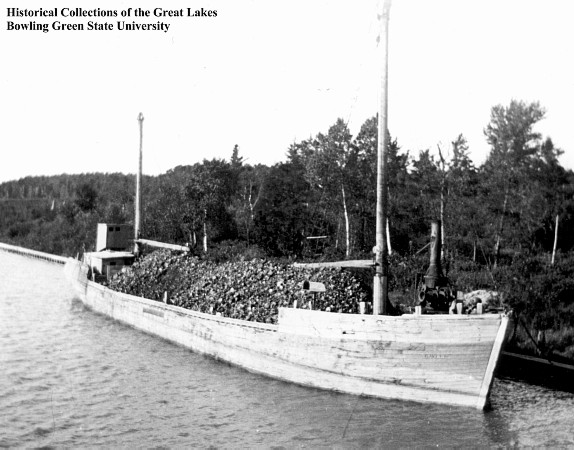

 Confirmed Location
Confirmed Location
 Unconfirmed location
Unconfirmed location